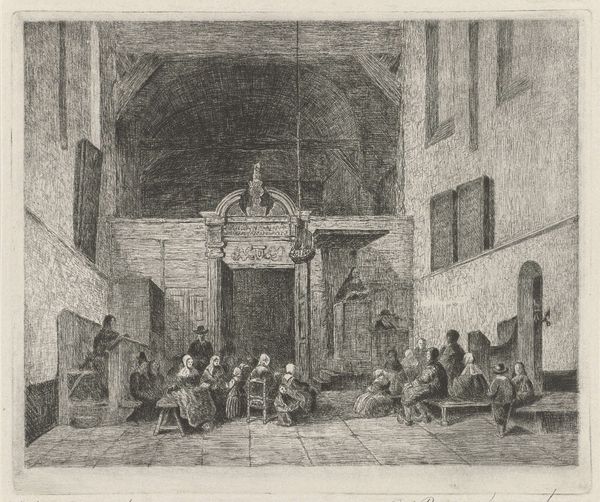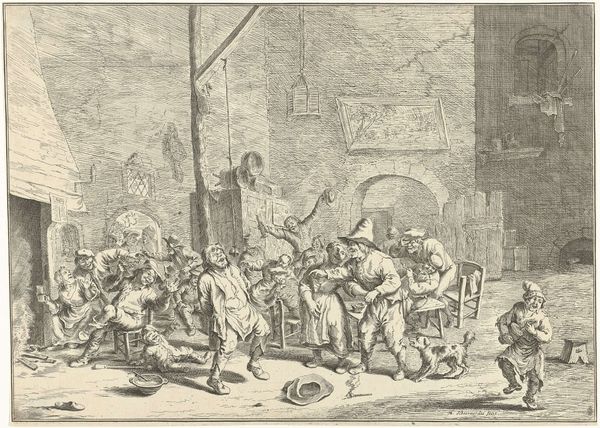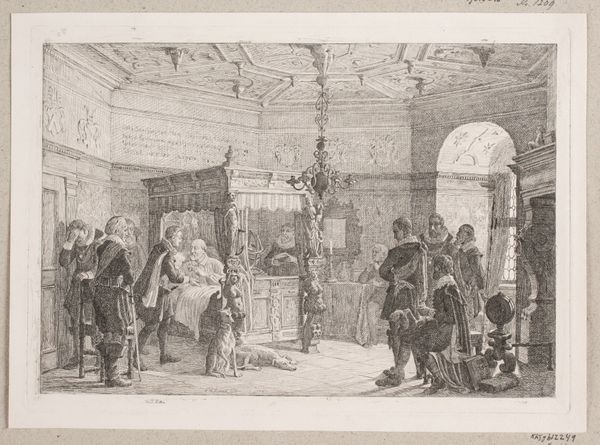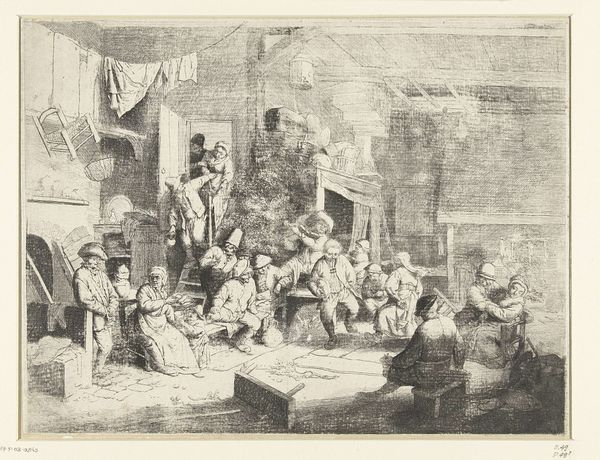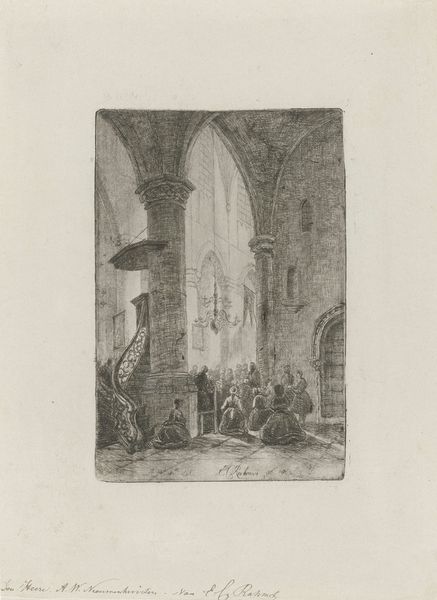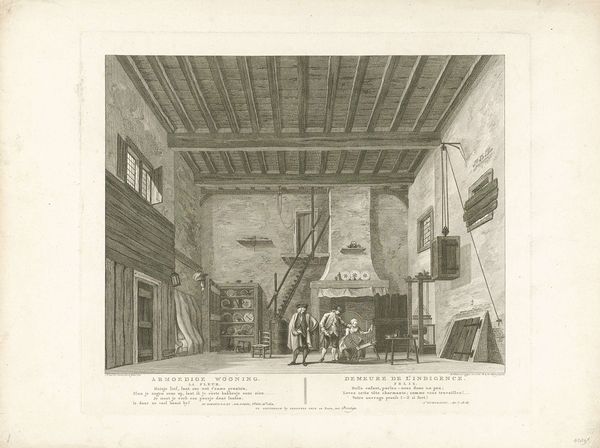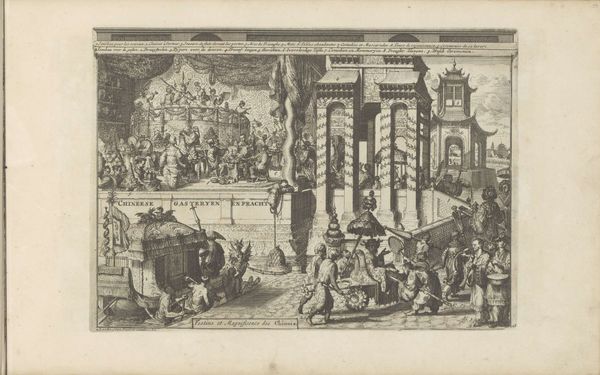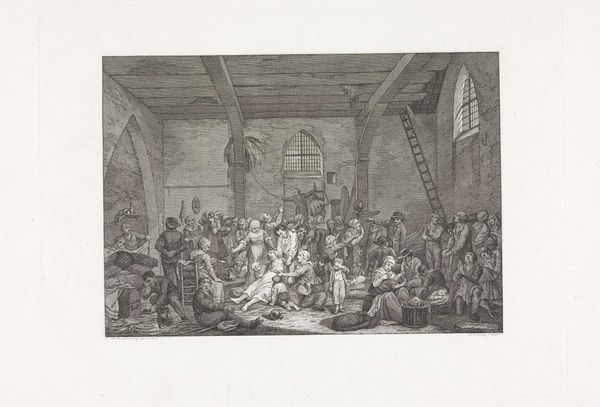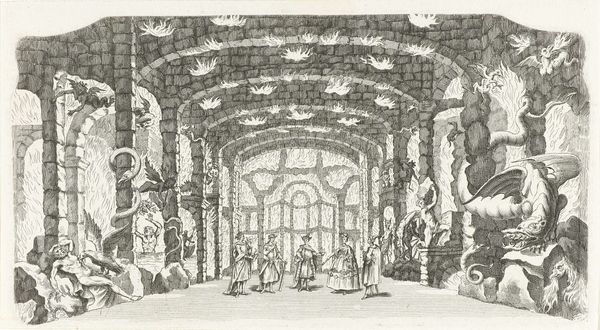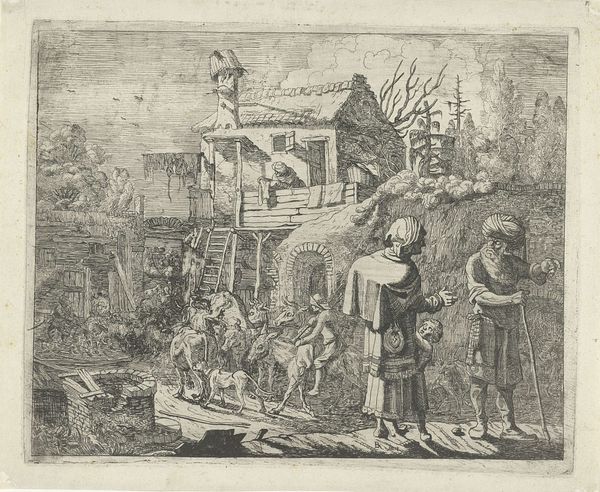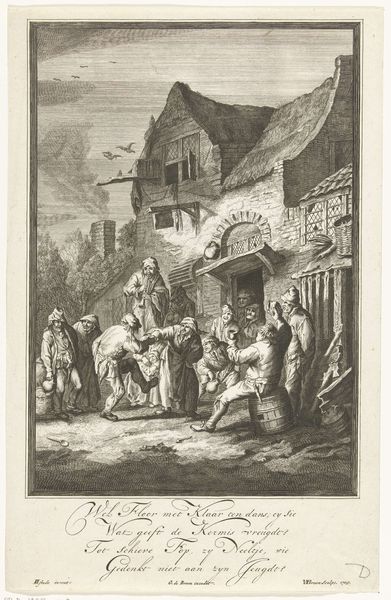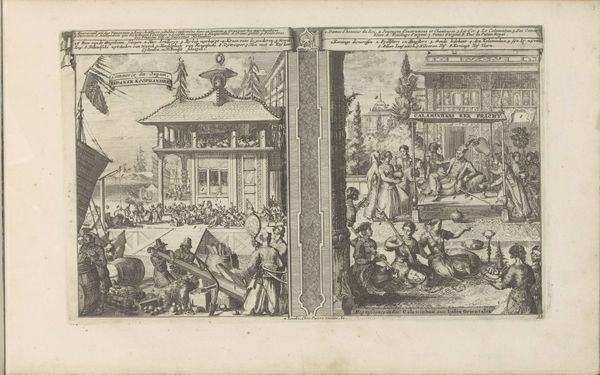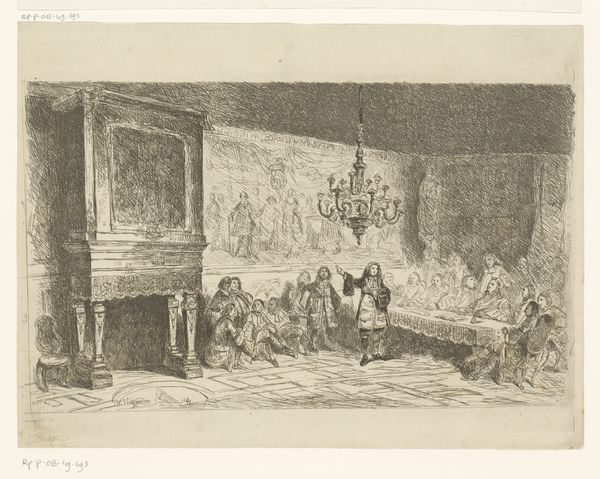
print, engraving
# print
#
landscape
#
genre-painting
#
history-painting
#
engraving
#
realism
Dimensions: height 141 mm, width 168 mm
Copyright: Rijks Museum: Open Domain
Curator: Ah, Eberhard Cornelis Rahms, capturing a "Church Service in a Village Church," sometime between 1833 and 1907, through engraving. The print renders an intimate, almost claustrophobic gathering within a simple house of worship. What springs to mind for you? Editor: I feel a certain hush observing this quiet congregation, like time holding its breath! Look how the light catches the wood grain of the rafters, yet the faces are nearly swallowed by shadow, as if belief were something deeply personal and unseen. Curator: The scene is striking for its ordinariness. Unlike the grand Baroque churches that dominated much of European religious art, Rahms presents us with a plain, almost domestic space. Think about the democratizing forces at play during this period and how they reshape notions of sacred space. Editor: Definitely less gold leaf and more… well, just being. It feels deeply human, doesn't it? I almost imagine the rustle of clothes, the occasional cough…the tangible weight of shared experience in this community space. It makes you wonder about their stories. Curator: That focus on the individual stories, situated within this particular community is significant. Rahms’ genre scene aesthetic blends effortlessly here to offer a quiet revolution, showcasing devotion amongst the ordinary and not the regal. Notice how the artist’s engraving focuses attention, but through the art, it also asks questions. Editor: It is so subtle and effective! It almost looks like a stage set and one cannot resist contemplating where faith resides - in architecture or in people assembled, in shared breath? This one will make you think a while longer, it already got under my skin… Curator: Precisely. Through his careful strokes, Rahms invites us to reconsider the social dynamics within these communities and to confront the silent dramas of devotion and connection. Editor: And hopefully contemplate the dramas of everyday living as part of artmaking. Thank you, Eberhard Cornelis Rahms.
Comments
No comments
Be the first to comment and join the conversation on the ultimate creative platform.
